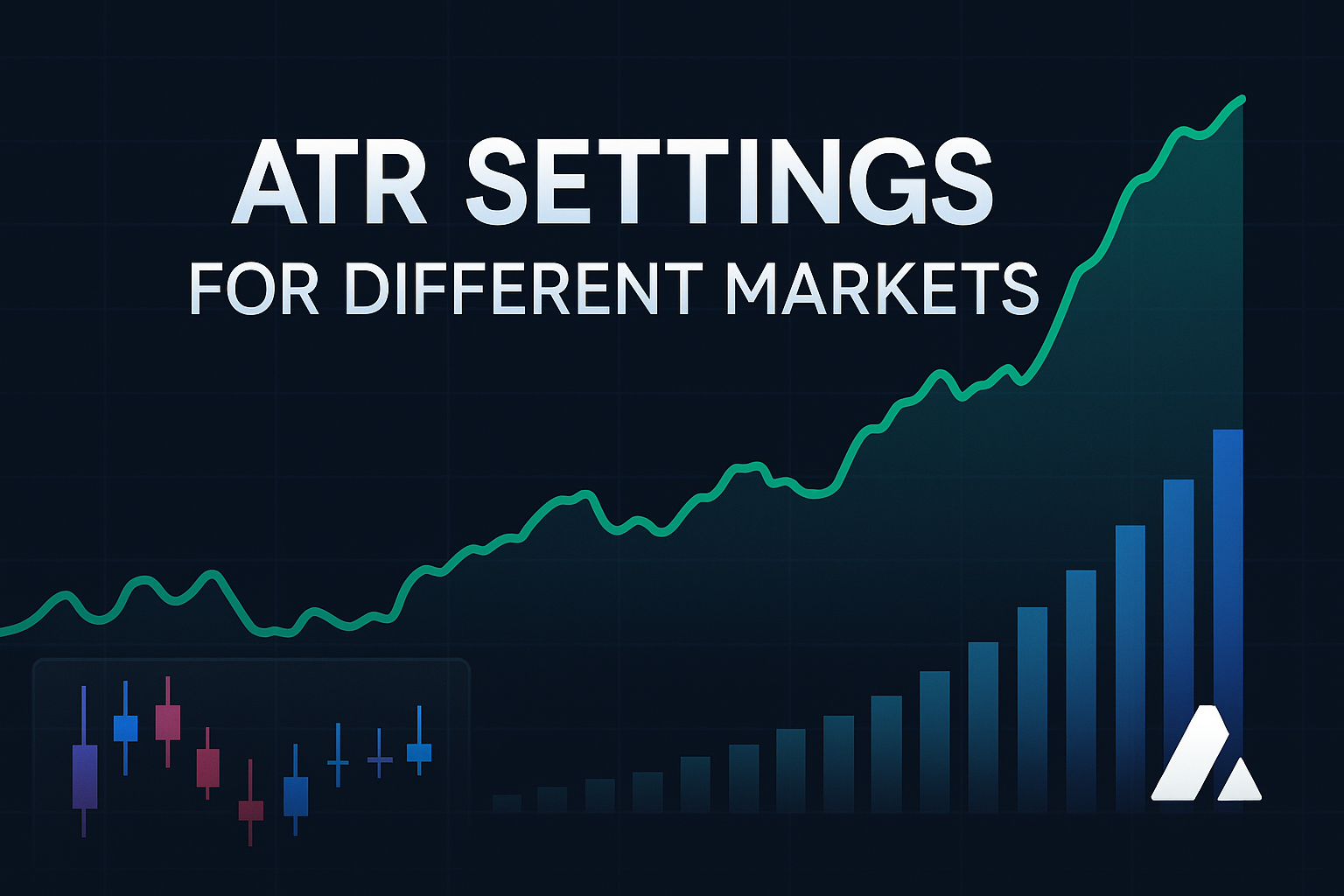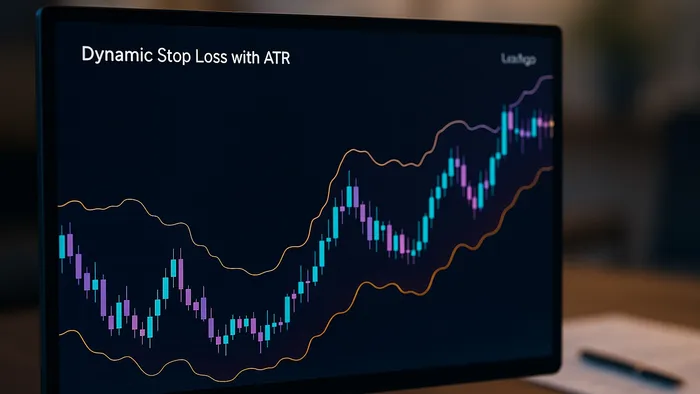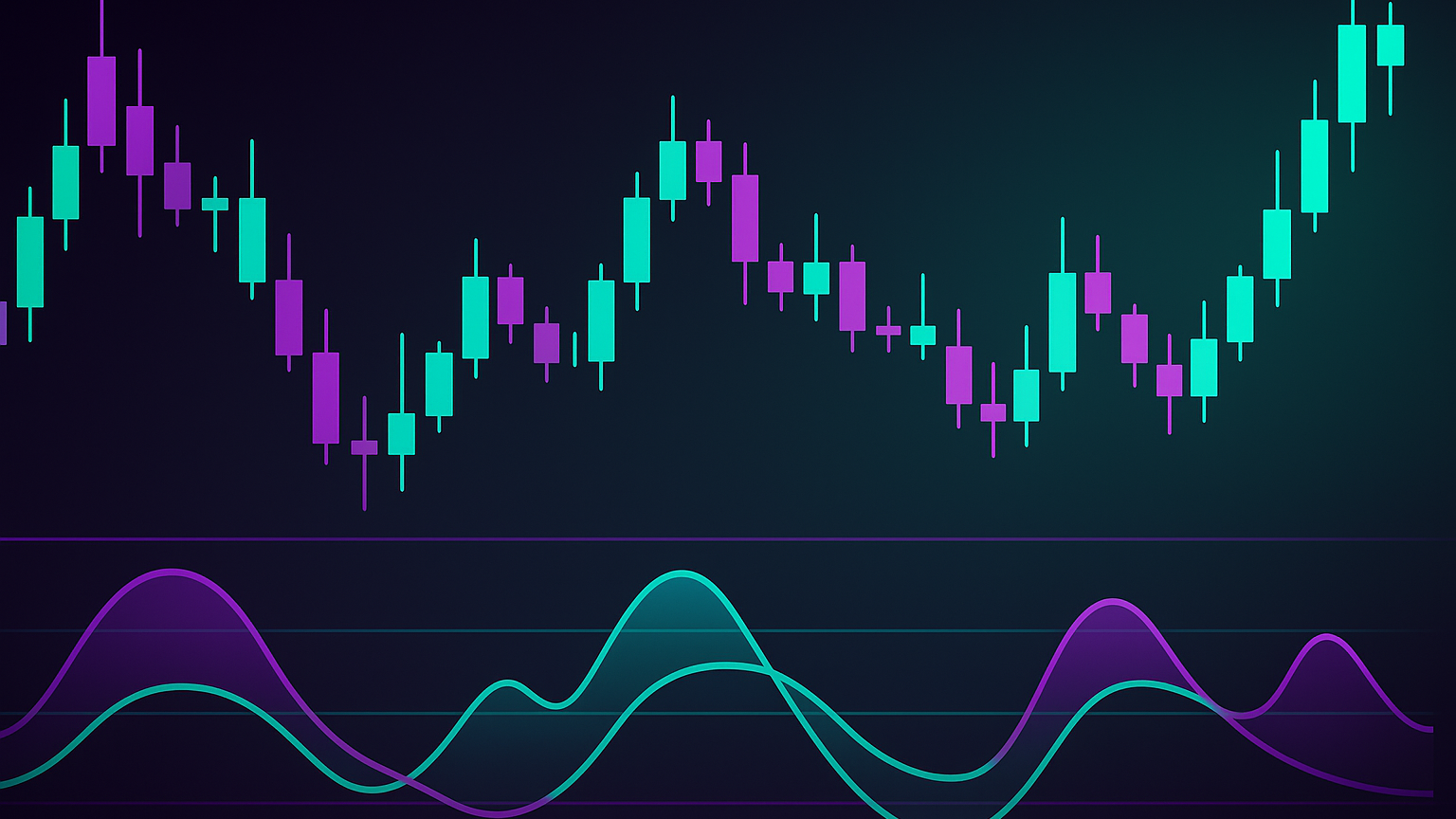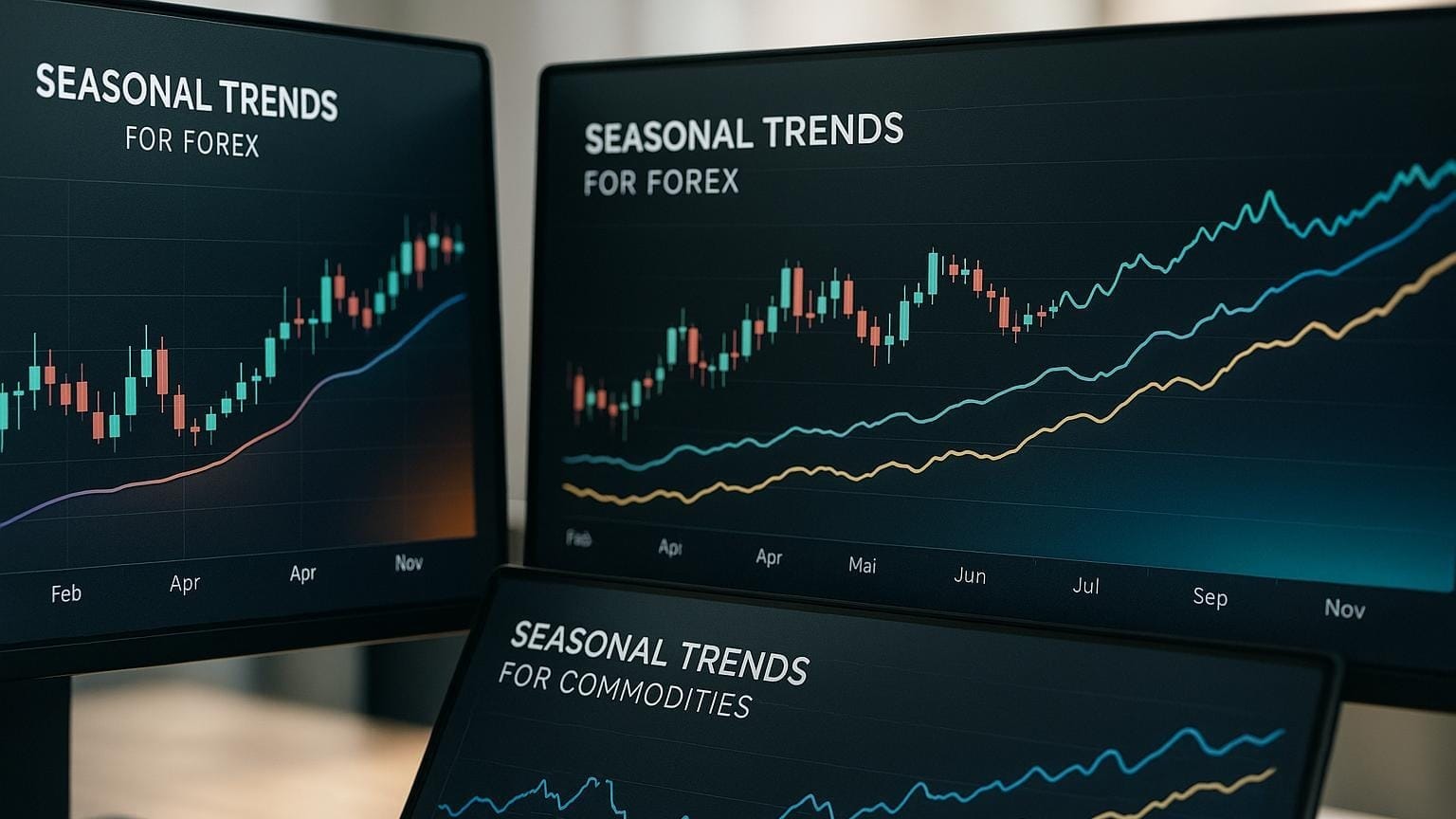Learn how to use the Average True Range to set adaptive stop-loss levels, enhancing your trading strategy and risk management.
Want a smarter way to manage trading risks? The Average True Range (ATR) indicator helps you set stop-loss levels based on market volatility. Unlike fixed methods, ATR adjusts in real-time to market conditions, making it a reliable tool for traders.
Key Takeaways:
- What is ATR? A measure of market volatility, calculated using price ranges over a specific period.
- Why use it? ATR-based stop-losses adapt to market changes, removing emotions from trading decisions.
- How to set it up?
- Use ATR multipliers (e.g., 1.5x–4x) based on your trading style (day, swing, or position trading).
- Adjust stops for volatility spikes or calmer markets.
- Benefits: Protects your trades, secures profits with trailing stops, and improves risk management.
| Trading Style | ATR Multiplier | Stop-Loss Distance |
|---|---|---|
| Day Trading | 1.5x–2x | Tighter stops |
| Swing Trading | 2x–3x | Moderate stops |
| Position Trading | 3x–4x | Wider stops for trends |
Quick Tip: For volatile markets, increase the ATR multiplier or use a longer ATR period for steadier stop-losses. Start with a 14-period ATR and adjust as needed.
This guide breaks down how to calculate ATR, set stop-losses, and refine your strategy for different market conditions. Read on to master ATR-based risk management.
How to Set Stop Losses with ATR Indicator (Like a PRO)
Setting Up ATR Stop-Losses
Now that we’ve covered the basics of ATR, let’s dive into how to use it for setting flexible stop-loss levels.
How to Calculate ATR
To calculate ATR accurately, you’ll need to determine the True Range (TR). Here’s how:
- Find the current high minus the current low.
- Calculate the absolute difference between the current high and the previous close.
- Calculate the absolute difference between the current low and the previous close.
The True Range is the largest of these three values. For a reliable ATR, use a 14-period average to smooth out the data.
Setting Stop-Loss Levels
ATR-based stop-losses adjust to market volatility. Use the following multipliers based on your trading approach:
| Trading Style | ATR Multiplier | Stop-Loss Distance |
|---|---|---|
| Day Trading | 1.5x – 2x | Tighter stops for shorter trades |
| Swing Trading | 2x – 3x | Moderate stops for mid-term trades |
| Position Trading | 3x – 4x | Wider stops for long-term holds |
For long positions, place your stop-loss below the entry point. For short positions, place it above. After setting your initial stop-loss, consider using a trailing stop to adjust it dynamically as the trade progresses.
Using ATR for Trailing Stops
Trailing stops help secure profits while adapting to market changes. ATR multipliers can guide your trailing stop strategy:
| Profit Level | ATR Multiplier | How It’s Applied |
|---|---|---|
| Initial Entry | 2.0x ATR | Provides a baseline level of safety |
| 1R Profit | 2.5x ATR | Adds a bit more breathing room |
| 2R+ Profit | 3.0x ATR | Locks in gains with maximum buffer |
For example, if the ATR for EUR/USD is 50 pips and you’re using a 2.5x multiplier, your stop-loss would be set at 125 pips. This approach ensures your stop-loss adjusts to market conditions while protecting your position.
ATR Settings for Different Markets

ATR Period Selection
The period you choose for ATR (Average True Range) directly impacts how your stop-loss reacts to price changes. Shorter periods lead to more reactive stops, while longer periods result in steadier ones.
- 5 periods: Represents 1 trading week
- 21 periods: Covers 1 trading month
- 63 periods: Spans 1 trading quarter
- 252 periods: Equals 1 trading year
"The average true range is an indicator of the price volatility of an asset. It is best used to determine how much an investment's price has been moving in the period being evaluated rather than an indication of a trend." – Investopedia
When using the Simple Moving Average (SMA) for ATR calculations, each bar in the selected period contributes equally. For example, in a 20-period SMA ATR, every bar contributes 5% to the final value. In contrast, Wilder's ATR method gives more weight to recent bars, using a 20-period setting, the most recent 20 bars account for 64.15% of the calculation.
ATR Multiplier Selection
Your choice of ATR multiplier depends on market conditions and your trading approach.
Market Conditions
| Market Condition | ATR Multiplier | Application |
|---|---|---|
| Normal Volatility | 2.0x | Ideal for standard breakout trades |
| High Volatility | 2.5x–3.0x | Suitable during news events or strong trends |
Trading Styles
| Trading Style | ATR Multiplier | Stop-Loss Characteristics |
|---|---|---|
| Day Trading | 1.5x–2.0x | Offers balanced protection for intraday trades |
| Swing Trading | 2.0x–3.0x | Designed for multi-day positions |
| Position Trading | 3.0x–4.0x | Handles longer-term market fluctuations |
These multipliers allow flexibility, helping you adapt to changing market dynamics.
Volatility Adjustments
Fine-tune your ATR settings to better manage risk as market volatility shifts. Here's how to adjust:
- Calculation Method: EMA-based ATR reacts about twice as quickly as Wilder's method when using the same period.
- Period Length: Shorter ATR periods reflect recent volatility but may require more frequent stop-loss updates.
These adjustments help you stay aligned with current market conditions while maintaining effective risk management.
Risk Management with ATR Stops
Adjusting Position Sizes with ATR
Market volatility can guide how you size your positions.
Formula:
Position Size = Dollar Risk per Trade / (ATR × Multiplier)
Example:
If you have a $50,000 account and risk 1% ($500) per trade, using a 2× ATR multiplier and an ATR value of $2.50:
500 / (2.50 × 2) = 100 shares.
This means higher volatility (a larger ATR) results in smaller position sizes, while lower volatility (a smaller ATR) allows for larger positions.
"ATR-based stop-losses are flexible, easy to calculate, and adaptable to changing market conditions." – Sean Mackey, Founder & CEO at LuxAlgo
Regularly reviewing these adjustments helps you stay aligned with market changes.
Using ATR for Market Analysis
ATR is a valuable tool for spotting market shifts and fine-tuning stop-loss strategies. Research shows that a 2× ATR stop-loss can reduce maximum drawdowns by 32% compared to static stop-loss levels.
| Market Phase | ATR Behavior | Stop-Loss Adjustment |
|---|---|---|
| Trending | Rising ATR | Widen stops (2.5×–3× ATR) |
| Consolidation | Falling ATR | Tighten stops (1.5×–2× ATR) |
| Breakout | Sudden ATR spike | Wait for stabilization |
When volatility spikes:
- Increase the ATR multiplier.
- Use a longer ATR period.
- Decrease your position sizes.
These strategies create a strong foundation for combining ATR with other analysis tools.
Combining ATR with Technical Indicators
Pairing ATR with trend indicators can improve trading outcomes. Studies suggest this approach increases performance by 15% compared to fixed stop-loss methods.
Ways to integrate ATR with technical indicators:
- Place stops below key moving averages during uptrends.
- Align stops with major price levels.
- Use ATR to determine the distance for trend line stops.
| Profit Target | ATR Stop Adjustment |
|---|---|
| Initial Entry | 2.0× ATR |
| 1R Reached | 2.5× ATR |
| 2R Reached | 3.0× ATR |
Summary: ATR Stop-Loss Best Practices
Here’s a quick guide to using ATR stop-losses effectively in your trading strategy.
Match ATR stop-losses to your trading style and market conditions:
| Trading Style | ATR Multiplier | Ideal Scenario |
|---|---|---|
| Day Trading | 1.5x – 2x | Quick, intraday trades |
| Swing Trading | 2x – 3x | Multi-day positions |
| Position Trading | 3x – 4x | Long-term trends |
Adjust ATR multiples based on profit stages for better risk management:
| Stage | ATR Multiple |
|---|---|
| Entry Point | 2.0x ATR |
| At 1R Profit | 2.5x ATR |
| Beyond 2R Profit | 3.0x ATR |
When volatility spikes, consider increasing your ATR multiplier to 3x–4x. This allows for wider stops, giving your trades more room to handle rapid price fluctuations while staying aligned with market dynamics.
FAQs
How do I choose the right ATR multiplier for my trading strategy and market conditions?
Choosing the right ATR multiplier depends on your trading style, market conditions, and risk tolerance. Day traders often use lower multipliers (1.5x–2x) to account for shorter timeframes, while swing traders may prefer slightly higher values (2x–3x). For long-term position trading, multipliers of 3x–4x are commonly used to accommodate broader market movements.
In volatile markets, consider increasing the multiplier (e.g., 2.5x–3x) to allow for larger price swings, while calmer markets may work better with lower values. Your personal risk tolerance also plays a key role; higher multipliers provide more room for price fluctuations but increase potential losses if the stop-loss is hit. Experiment with different settings to find what aligns best with your strategy and market conditions.
What are the benefits of using ATR-based stop-losses instead of fixed stop-loss levels?
ATR-based stop-losses offer greater flexibility compared to fixed stop-loss methods because they adjust dynamically to market volatility. During periods of high volatility, the stop-loss widens to give trades more room to breathe, reducing the chances of being stopped out prematurely. In calmer markets, the stop-loss tightens to help lock in profits more effectively.
This adaptability not only improves risk management but also helps traders maintain smoother equity curves by aligning stop-loss levels with current market conditions. By accounting for volatility, ATR-based stop-losses provide a more tailored and responsive approach to managing risk in trading.
How does the selected ATR period influence how quickly stop-loss levels adapt to market volatility?
The ATR period you choose plays a key role in how responsive your stop-loss levels are to changes in market volatility. A shorter ATR period reacts more quickly to sudden price swings, making it ideal for fast-moving markets or short-term trades. On the other hand, a longer ATR period provides a smoother, more stable calculation, which can help filter out minor fluctuations and is better suited for long-term strategies.
By selecting the right ATR period for your trading style and market conditions, you can create a more adaptive and effective stop-loss strategy that aligns with your risk management goals.








